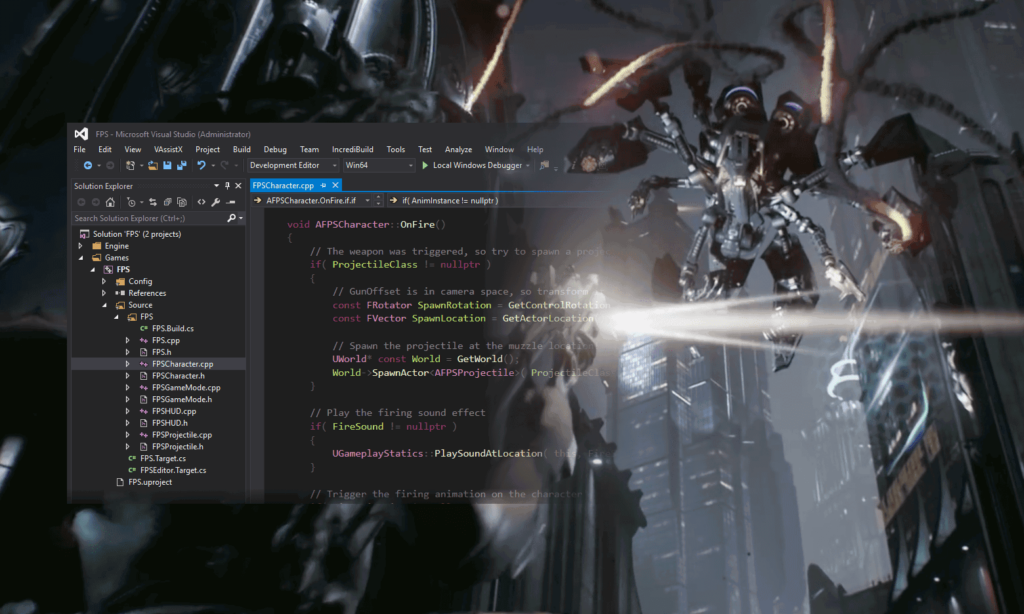“I’m not really good at this,” you say to your friend as he launches into his latest creation. “It’s too hard!” Game development is an incredibly complex process that requires both artistry and technical expertise. This makes it difficult to get started without proper training or experience. While most people will never make video games professionally, there are still many ways to enjoy the benefits of being a developer.
Even if you’ve never touched code before, you could consider yourself a game developer by tinkering around with simple concepts like making maps and objects for a multiplayer online battle arena (MOBA) game. You may also want to try developing a personal mobile app or creating a website using HTML5. The possibilities are endless. If you’re feeling overwhelmed, don’t worry — we’ll break down everything you need to know about getting started on your own game project.
What Is Video Game Development?

Before diving into what exactly a game designer does, let’s first take a look at how a typical game works. A game consists of several elements that come together to create an interactive story. It may include characters, locations, puzzles, and more. Each element has its own purpose within the larger picture. For example, some characters might have unique abilities while others move through the map faster than normal. Different environments might require you to collect items from certain points. And so on.
Video game development is actually quite similar to other types of creative projects. Most artists use various software applications to draw, sketch, color, model and animate their creations. Musicians employ music production programs to arrange songs and sound effects. Writers craft stories with writing apps. Even film editors use editing software to cut scenes together. All these professionals rely on powerful computers and specialized software to bring their visions to life.
So why do professional video game designers work long hours in front of computer screens? Because they’re responsible for making sure all those different pieces fit correctly. They ensure each element runs smoothly, functions properly, and looks the way it should. If something goes wrong, they fix it and continue until they’re satisfied.
Becoming a Game Developer Isn’t Hard

There are no official certificates or degrees specifically related to game development. In fact, you won’t find any accredited colleges teaching game designing. However, learning to program is necessary when making digital content. There are tons of great resources available online that teach basic programming principles.
Once you understand the basics of coding, you’re ready to start experimenting with game development platforms. Some popular options include Unity3D, Adobe Flash Professional, Construct 3, GameMaker, Unreal Engine 4, Source 2, CryEngine, Godot, and Cocos2d-X. To choose one, simply search Google for tutorials, guides, forums, and support communities specific to whichever platform interests you.
Keep in mind that game development isn’t an exact science. Every project is different, which means the rules aren’t set in stone. What works well for someone else may not always translate to what you want. Don’t feel discouraged if things go awry! Just keep trying new ideas until you figure out what suits you best.
Start Small With Your Own Ideas
If you’re looking to develop a game but aren’t confident enough to tackle bigger ideas, you don’t necessarily need to hire a team of coders. Instead, you can use free or low-cost tools to build off existing mechanics. The following list includes some examples of smaller projects you can complete over time. Feel free to branch out once you gain confidence.
1. Create a Character Art Gallery
You probably already have lots of images saved on your phone. Why not turn them into playable characters? One option is to download premade sprite sheets created by professional studios like Capcom, Square Enix, and Blizzard Entertainment. These files contain sets of animated frames that represent every possible movement for a character. You can then edit the pictures to suit your needs.
Alternatively, you can use a tool called Spriter X to quickly add animations to custom sprites. You can even import videos directly from YouTube to playback during gameplay. Then, export the resulting files as.CSV or.JSON data. Once imported into another application, you can customize the models further.
For a more advanced approach, check out the Unity Asset Store where you can purchase assets designed by other users. Or, you can use an open-source library called LibGDX to write your own scripts for drawing individual frames.
2. Design a Single Level Map
A single level doesn’t offer much complexity, but it provides a good foundation to practice building upon later. As such, you can use tools like Photoshop to mock up levels that you intend to expand later. Alternatively, you can use web mapping services like TileMill or CartoDB to visualize your designs.
Once you have finished composing your maps, you can export them as JSON files. Open the file in a text editor and replace placeholder names with variables that correspond to actual values. When it comes time to run the script, the variable references automatically change to reflect the correct information.
3. Build a Simple Tower Defense Game
One of the easiest ways to begin game development is to experiment with simple concepts. Here, you can use a tool like Construct 3 to construct a tower defense game using prebuilt assets and scripts. Simply place trees and walls in strategic areas and watch the enemies attack. You can even add a pause menu or quit button to stop the action midway.
4. Make a Platforming Adventure
To make a more involved adventure game, you can combine assets from multiple sources into a cohesive whole. You can use freely available assets from asset libraries like Tiled or Unity Web Player Pro for this task. Alternatively, you can download premade packages from websites like ZBrushModelPack, GameArt3D, Unity Assets, or Unity Freebies.
After importing these assets, you can edit them to match your vision. For instance, you can tweak colors, adjust textures, and resize shapes. Afterward, export the final product as either.OBJ or.BLEND files. Now, you can insert the resulting object into your scene.
5. Build a Multiplayer Online Role-Playing Game
Building an MMO isn’t easy. But unlike traditional MMORPGs, solo players can join forces to fight monsters and bosses. One way to do this is to create a server with dedicated servers like Phaser.js and host it on a hosting service like Heroku. Another method is to use a free plugin like ServerlessPHP.
With this setup, you can easily share your game with friends via Discord. Alternatively, you can use a framework like Laravel Spark to quickly build backend functionality. Using this library, you can even integrate third-party cloud storage solutions like Amazon S3.
6. Experiment With New Tools
While most game developers stick to only one particular toolset, hobbyists often use multiple ones. For example, you can use Adobe Premiere Pro to edit audio and video clips; Illustrator to create artwork; After Effects to add special effects, and Logic Pro to mix tracks.
Hobbyists tend to prefer free alternatives whenever possible. Also, since most of these programs are commercial products, you must pay for access unless you subscribe to a monthly plan. Fortunately, the internet contains numerous sites where you can download trial versions of all kinds of software. For example, you can install the beta version of Adobe Creative Cloud on your Mac, Windows, or Linux PC.
7. Try Building Mobile Apps
In addition to desktop applications, modern smartphones utilize operating systems that feature built-in game engines. Thanks to Apple Arcade and Android Play Pass subscriptions, you can now enjoy mobile game experiences similar to traditional console titles.
Most mobile devices ship with default apps that handle basic tasks like opening menus, launching games, and controlling notifications. But if you’d rather make your own, you can use tools like React Native Studio to build native iOS or Android applications.
8. Start Offloading Work to Others
When working on large projects, you sometimes end up spending excessive amounts of time doing mundane tasks. Rather than wasting your energy focusing on repetitive tasks, consider outsourcing them to freelancers. By delegating responsibilities to contractors, you allow yourself to focus on higher-value activities.
This also gives you peace of mind knowing that important decisions aren’t bogging you down. Freelancing platforms like Upwork or Fiverr provide hundreds of gig workers who specialize in different fields. Many of these people will gladly accept small jobs for extra income.
9. Learn From Other People’s Projects
As mentioned earlier, game development is not an exact science. Unlike other forms of entertainment, you can’t simply consult a book or movie to learn how to become a better coder. Thankfully, the internet features countless forums filled with helpful tips and tricks. One great resource for beginners is /r/learnprogramming where experienced programmers answer questions.
Another fantastic community is /r/gamedev where newcomers ask questions and receive feedback from seasoned experts. Be sure to check out these subreddits regularly because they can help you improve dramatically over time.

